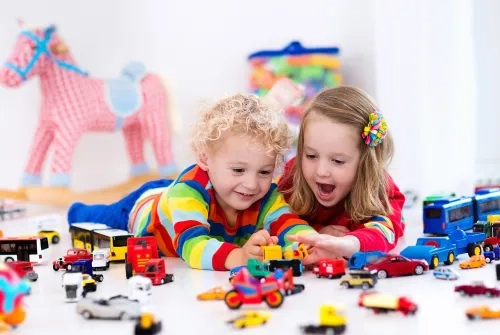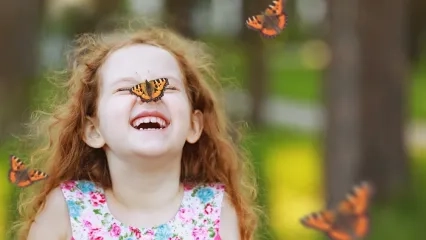As a result of the failure of the central nervous system to process the vestibular, tactile, or proprioceptive senses properly, it is a condition that manifests itself with difficulty in the separation, modulation, coordination, or organization of the senses and makes it difficult to plan the movement. In these cases, the child's developmental steps do not continue as they should and are interrupted. Many problems can be seen together in children with sensory processing disorders.
What Sensory Problems Can Be Encountered?
● Overreaction to touch, movement, sound, or vision
● Underreaction to sensory stimuli such as sound and light
● Coordination problems
● Delays in academic achievement
● Difficulties in daily life skills such as dressing, self-care
● Difficulty in organizing motor movements
● Activity level above or below normal compared to peers
What is Sensory Integration?
The processes of organizing, interpreting, and planning all sensory information from the environment are defined as "Sensory Integration".
In other words, sensory integration is a process that organizes the senses that a person receives from their body and environment, makes it possible to use the body effectively in their environment, and is managed by the central nervous system.
Processing and integrating sensory information as needed are the building blocks of sensory integration skills such as postural control, integration, praxis, visual motor skills, and self-esteem. At the same time, individuals must participate in daily life activities.
Due to the developmental sensory disorders experienced in childhood, the motor skill learning and planning and recall processes are facilitated with the help of the Ayres sensory integration approach.
In most children, sensory integration develops with normal childhood experiences. Children learn and develop the ability to interpret, adjust and respond appropriately to sensory input received through these sensory experiences during normal development processes and games. This allows them to do correctly with the skills they have learned or just gained. One example is the ability to walk without being stuck or hit by any obstacle.
The purpose of the "Ayres Sensory Integration Approach", unlike many treatment approaches, involves not only practicing specific skills such as matching visual stimuli, learning to remember sounds, distinguishing one sound from another, and even drawing lines from one point to another, but also teaching the processes by which the stimuli perceived by the brain can be retained in memory and turned into action when necessary.
Development of Sensory Integration Approach in the World
The theoretical framework of Sensory Correction Therapy was developed in the 1970s by Dr. Jean Ayres, who studied psychology and neuroscience in the United States.
Dr. Ayres saw the need for an approach that would help therapists accurately and objectively evaluate and treat individuals with "Sensory Integration Disorder" (sometimes referred to as Sensory Processing Disorder).
Sensory Integration Therapy
Sensory integration therapy is an intervention program that includes meaningful therapeutic activities, specifically aimed at the active participation and interaction of the senses such as touch, vestibular, and proprioceptive.
Sensory integration therapy aims to involve the child in activities that will optimize learning by replacing the negative interaction caused by sensory integration disorder with positive answers.
In Which Situations Is This Approach Effective?
● Sensory Problems
Sensory input (Overactive or subnormal response: voice, movement, touch, vision)
Coordination problems
Delays in academic achievement or activities of daily living
Abnormal low /high activity level
● Autism Spectrum Disorder
● Dyspraxia
● Premature Baby
Effects of Sensory Integration Therapy
Sensory Alert
When children interact and discover sensory stimuli in the sensory integration room, they learn how to interact correctly with the larger world around them.
Balance, Motion, Spatial Orientation
Sensory integration therapy facilitates daily life by helping children develop their visual, vestibular, and proprioceptive processing abilities as well as fine and coarse motor skills.
Body Awareness
Sensory integration therapy helps children become more aware of their bodies.
Coordination
In addition to coordination between movements, there is also improvement in hand-eye coordination.
Learning and Academic Success
Sensory stimuli they receive during sensory integration activate different areas of children's brains and support academic development.
Attention and Perception
Sensory integration therapy improves children's perception and attention skills.
Behavior Problems
While sensory integration therapy helps overactive children relax both physically and mentally, it is encouraging for less active children.
Social Relationships
Reduction of aggressive behaviors and improvement of social relations are aimed.
Language Functions
Sensory integration therapy also aims to improve language and speech functions.
What Does Sensory Integration Aim to Achieve?
The processes of organizing and interpreting all sensory information from our environment according to the need and planning are defined as "Sensory Integration". The primary purpose of therapy is to provide the child with impaired motor and sensory development due to the lack of sensory integration with the ability to notice sensory inputs and return them to motor skills in place and on time. Thus, the child's learning is accelerated, and their ability to participate in and maintain activities is also improved. Processes are organized by the therapist by providing an appropriate learning environment for the child to recognize and use the sensory inputs they will need.
The therapy program is determined by the child's individual needs and preferences after a thorough evaluation. Equipment used in sensory integration therapy often includes large rolls, balls, trampolines, and suspended equipment that provide intense proprioceptive, vestibular, and tactile experiences. Practices in therapy sessions are planned on the common goals determined by the therapist, family, and child. The therapist reviews the practices in line with the child's feedback and plans the child-specific therapy process. Therapies should continue in the home environment. Another important issue is family education. Children spend more time with their families than they do in therapy. For this reason, close cooperation is established with the family as child-centered in family training, and it is aimed to get the highest efficiency from treatment. The treatment program is specific to each situation/dysfunction and is enriched according to the needs and preferences of the child.






